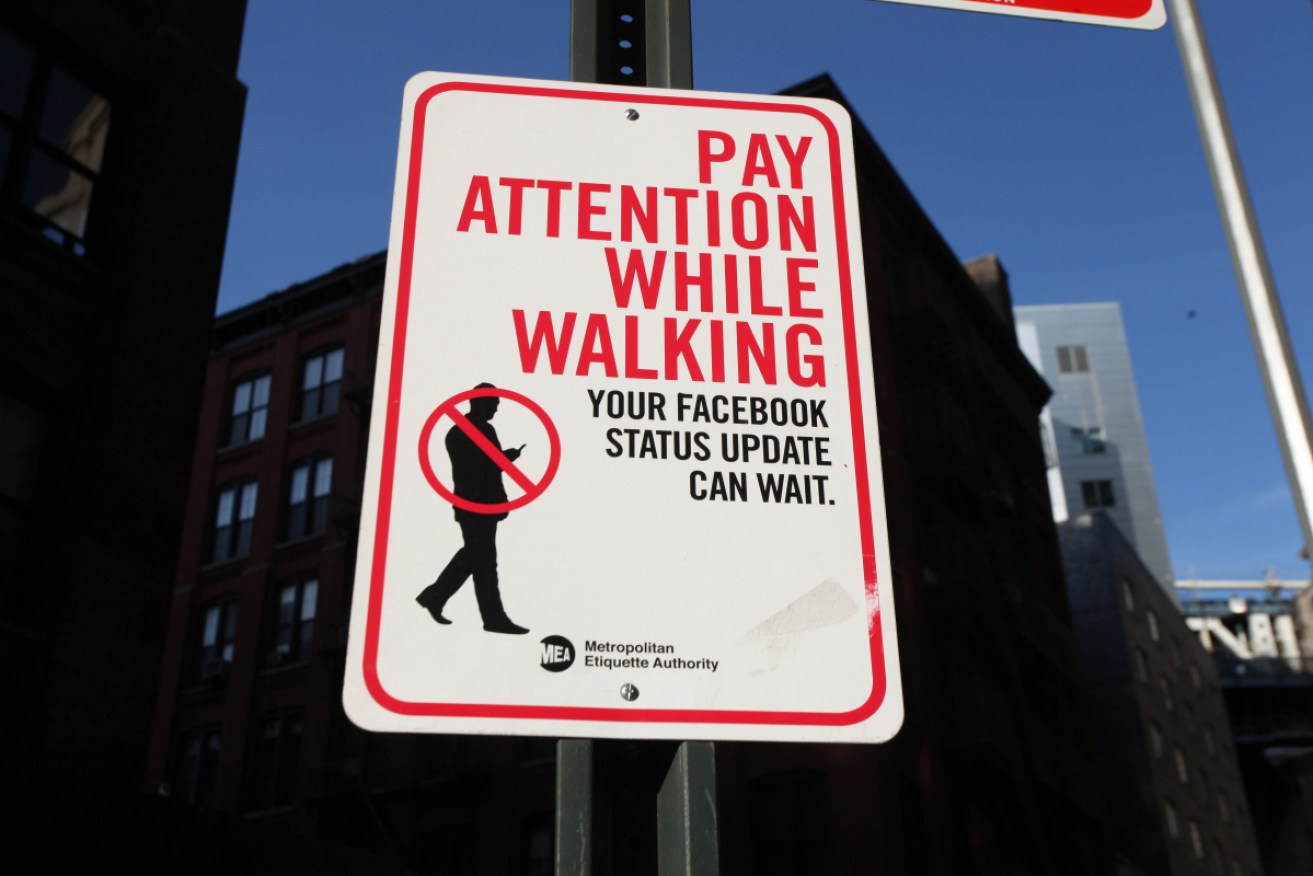Eyes up: Smartphones are doing us harm in yet another way


Yep, we've come to this. People are becoming increasingly distracted by their phones, and as a result, sustaining more injuries. Photo: Getty
There’s no age group safe from the physical dangers of smartphones, according to the first-ever study into the head and neck injuries caused by the devices.
The most common victim is a white female, aged between 13 and 29 years.
But there’s a distinctly different way in which we injure ourselves with phones, depending on our age group.
The research team out of Rutgers New Jersey Medical School in the US compiled 20 years of hospital admissions, from the launch of the first widely popular smartphone, the iPhone, in 2007.
By analysing data from US emergency department presentations for head and neck injuries, they were able to figure out just how many people had been injured (seriously enough to go to hospital) directly or indirectly from a phone – and how.
There was a sharp increase early in the timeline, as smartphones became more widespread, and then again in 2016, which researchers attributed to the advent of Pokemon Go.
- Related story: How phones have turned us into a zombie nation
Two distinct age groups emerged as the key victims: 13 years and under, and 13 to 29-year-olds.
Those under 13 were more likely to be directly injured by a smartphone – either by someone else’s clumsiness, or their own.
The study’s notes indicated parents were prone to unwittingly hitting their child in the face or head with an in-hand phone.
And the bigger smartphones get, the more serious the injury can become (think ph-ablets like an iPhone Plus or Samsung Galaxy Note).
- Related story: How to cut down your screen time
The 13-to-29 age group were more likely to be victims of phone-related injuries, meaning they were distracted by their phones while they should have been doing something else.
The most obvious case here is using a phone while driving.
In Australia, a Queensland doctoral candidate reported in October that Snapchat was the phone habit most likely to kill drivers aged between 17 and 25.
There’s ongoing public awareness campaigns about the dangers of using a phone while behind the wheel.
But the research team also identified a growing trend of people hurting themselves while walking and using their phone.
This is in line with augmented reality games like Pokemon Go, where players are encouraged to move around to excel to the next level.
Whether they’re texting or catching ‘em all, people are encountering injuries like facial cuts and wounds at increasing levels.
There’s also a disturbing rise of mild traumatic brain injuries – probably caused by walking into a solid object.
Conversely, a study from 2013 that looked at all-over injuries (not just those to the head and neck) found most injuries were fractures or dislocations, mostly caused by people falling over.
From the other age groups, those aged 30 to 49 were most likely to do themselves a mischief while texting, while the over-50s were most prone to injury from using their phones while walking (either texting or taking a call).
The conclusion from all these studies?
People need to be told to concentrate on their action task at hand – walking, driving, parenting – rather than being distracted by their phones.
Nowhere is safe – not even the couch
Even when we’re stationary, our phones are causing us physical pain, a physiotherapist says.
There’s a phenomena called text neck, and it’s triggered by extended sessions on our phones in less than ergonomic positions
University of South Australia physiotherapist Dr Rose Boucaut told The New Daily people were getting stuck in hours of phone use in awkward positions, like bending their necks forward over their phones and contorting their torsos and legs into unnatural positions.
“These postures put uneven pressure on the soft tissues around the spine, (which) can lead to discomfort,” Dr Boucat said earlier this year, in response to a paper she co-edited.
The study from Khon Kaen University in Thailand watched and recorded 30 smartphone users and their regular daily use, then pitted their patterns against an ergonomic assessment tool.
All of the participants – who used their phones for up to eight hours a day – returned results in the red zone for musculoskeletal disorders in the neck, shoulders, upper back, wrists and hands, and lower back.









